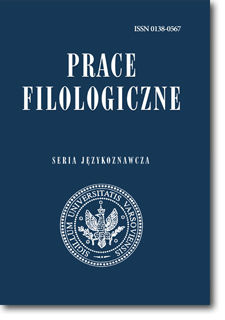Analysis of Croatian Corpus of Child Language (Age 7 to 12) and Its Usage in Teaching
Analysis of Croatian Corpus of Child Language (Age 7 to 12) and Its Usage in Teaching
Author(s): Melita Ivanković, Katarina Aladrović SlovačekSubject(s): Language and Literature Studies
Published by: Wydział Polonistyki Uniwersytetu Warszawskiego
Keywords: język dzieci; korpus; nauczanie; gramatyka; język mówiony; child language; corpora; teaching; grammar; spoken language
Summary/Abstract: The Croatian National Corpus (www.hnk.ffzg.hr) has over a hundred million words. A database of Croatian child language was created within the CHILDES project, but it includes solely the period till the age of six. The purpose of the research project described in the paper is to analyze the corpus of primary school children language (i.e. from the age of seven to twelve). The corpus includes around 1,500 written works collected durin research in 30 primary schools in all the regions of Croatia, and it contains around 30,000 words. The research also tries to answer the question of how to use the corpus while teaching the mother tongue in primary school and help children start enjoy learning their language. The research shows that it is necessary to create a corpus of spoken and written school-age Croatian since it may be of use while teaching Croatian to children. The corpus can help teachers create tasks which would be appropriate for pupils. Since a large number of deviations from the standard can be found both in the written and the spoken language (in as much as 96% of cases), the corpus will hopefully help eliminate various types of grammatical and orthographic errors. It may also help children learn on their own mistakes (“trial-and-error method”) – to identify the errors and correct them. Additionally, the compiled corpus shows that the structure of children’s texts is mostly based on simple sentences and contains a large number of punctuation errors. All things considered, the corpus may prove a good stimulus for learning and also for subsequent analysis through which the pupils can, using trial and error, come to the correct results at the same time learning the language in an interesting way.
Journal: Prace Filologiczne
- Issue Year: 2012
- Issue No: 63
- Page Range: 13-24
- Page Count: 12
- Language: English

